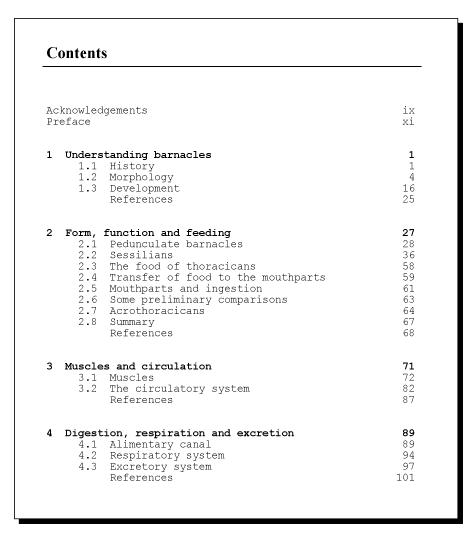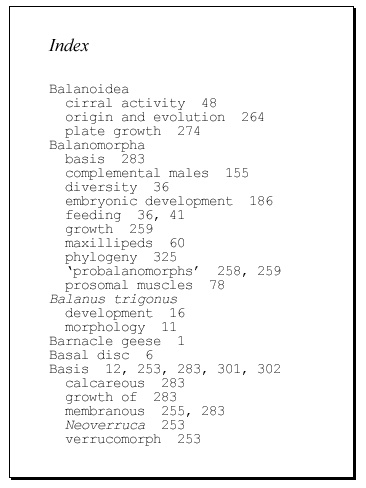| You've found a book that you think might have some information about your topic. What's next?
| A. Check the Table of Contents
|
First check the Table of Contents in the front of the book to see if there is a whole chapter devoted to your subject.
|

Image Credits: [1]
If there isn't an entire chapter, check the Index at the back of the book for relevant page references.
- Note that under a major heading (e.g. Balanomorpha), there may be indented terms that can lead you to the appropriate aspect of the topic (e.g. diversity).
- A range of pages will usually offer more information than a single page.
- Often a page that contains an illustration, graph or table will be italicized or bolded.
- Some books have a taxonomic index in addition to a general index. If that's the case, you can look up an organism in the taxonomic index.
|

Image Credits: [2]
|
Image Credits:
- ↑ Anderson, D.T. 1994. Barnacles: Structure, function, development and evolution. Chapman & Hall, London.
- ↑ Anderson, D.T. 1994. Barnacles: Structure, function, development and evolution. Chapman & Hall, London.

